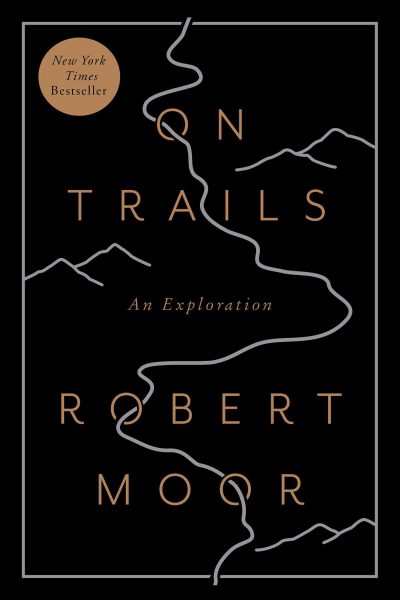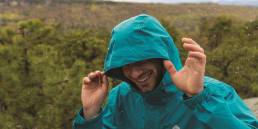 In the late eighteenth century, a commercial road was opened in the White Mountains, through a notch and along the western portion of Mount Washington. As curiosity for the mountains grew, Native trails were replaced by these roads and inns. Years after the road opened along the mountain, a man by the name of Abel Crawford, and his son Ethan, cut trails to open up guiding opportunities for eager adventurers. Thus, the Crawford Path, the oldest continuously maintained hiking trail in America, was born, and soon was followed by widened roads, shelters, and a railway. “It was a perverse fate, then,” Robert Moor writes, “that the mountain’s untamed allure would be precisely what led to its own taming.”
In the late eighteenth century, a commercial road was opened in the White Mountains, through a notch and along the western portion of Mount Washington. As curiosity for the mountains grew, Native trails were replaced by these roads and inns. Years after the road opened along the mountain, a man by the name of Abel Crawford, and his son Ethan, cut trails to open up guiding opportunities for eager adventurers. Thus, the Crawford Path, the oldest continuously maintained hiking trail in America, was born, and soon was followed by widened roads, shelters, and a railway. “It was a perverse fate, then,” Robert Moor writes, “that the mountain’s untamed allure would be precisely what led to its own taming.”
This history of one of the Northeast’s most famed hiking destinations, and many other hints as to why we follow paths, are layered into Moor’s bestselling work, On Trails: An Exploration. His book is expertly broken up into chapters that investigate the development of trails through human nature as well as the natural world. Through essayists, naturalists, and hikers, Moor explores the trails of humans and animals, and how we’ve developed along with trail networks around the world. He starts his journey in Newfoundland, where he witnesses what are thought to be the earliest trails on Earth. Ancient creatures called Ediacarans formed small, now fossilized pathways when needing to recollect themselves after being knocked from a perch.
In understanding trails and their efficiency further, Moor jumps to ants after noting that “Ediacaran trails were not really, trails, they were traces” and that there’s “no reason to believe that one Ediacaran would have followed in the footsteps (or rather, foot smears) of another.” Ants, on the other hand, deposit pheromones for other members of the colony if a trail leads to a positive outcome, like food. As for humans, “we generally don’t make trails unless there is something on the other end worth reaching.” Moor revisits this throughout On Trails as he walks us through the history of Cherokee people and other Native tribes, who formed long trails for seasonal gathering and agriculture or while following migrating game animals.
To many of his points, trails are something we take for granted in modern days, as technology has furthered and methods for direction and travel have changed.
These “trail-walking cultures,” as Moor classifies them, “would make modern Westerners, by extension, a ‘road-driving culture’,” a common parallel through his work. One such example is with modern trail builders, who “attempt to find the sleekest route in advance—so that subsequent walkers will never have a reason to diverge from it. In this sense, a hiking trail shares more in common with a modern highway than it does with an ancient Cherokee footpath.” It’s ironic then to see some of the most appealing paths in the U.S, like the Appalachian Trail, or Pacific Crest Trail, receive the hiker numbers they do; yet they’re visited for a purpose of being in remote, natural settings.
As he hiked the Appalachian Trail in 2009, Moor got to experience the “chlorophyllic glow” of trails around the Eastern mountain ranges and those also made by the Cherokee. Rather than the switchbacks of the Western mountain ranges, many of these trails “reach their destinations as quickly as possible…they tend to charge up slopes in a straight line, following the ‘fall line’—the path water would take while flowing downhill.” Although this style of trail is ever popular in the Northeast, they face lots of wear-and-tear due to types of footwear and stepping off trail. Moor doesn’t waste time addressing trail degradation and Leave No Trace principles through his chapters, reminding us that the value of these trails is rich and dependent on those who step foot on them.
Moor provides helpful doses of history and personal hiking anecdotes that truly make On Trails an enticing read. To many of his points, trails are something we take for granted in modern days, as technology has furthered and methods for direction and travel have changed. History is lost in new footsteps, yet trails are preserved and kept around through their usage. There is a lot to gain after flipping the last page of “On Trails” and absorbing the knowledge and insight Moor has provided readers. Beginning an early chapter, he writes “It is impossible to fully appreciate the value of a trail until you have been forced to walk through the wilderness without one.” Next time readers end up on a path in the woods, they’ll have even more to appreciate, as Moor’s writing provides direction and knowledge around every page turn.
Ethan Gresko
Ethan is a New York State native who enjoys day hikes between the Adirondacks and Hudson Valley, to the Finger Lakes. He loves the written word, is an aspiring 46er, and a firm believer that you have to go down before you go up!




